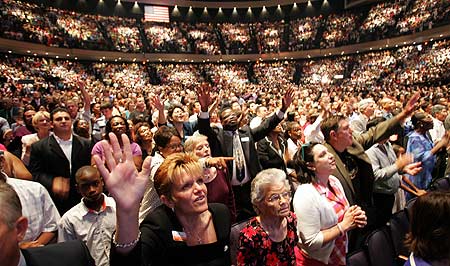 Ask pretty much any regular, even daily, Mass-going Catholic… Novus Ordo Mass-going Catholic, that is… how important the homily is, and the odds are pretty good the answer will be, “It’s incredibly important!”
Ask pretty much any regular, even daily, Mass-going Catholic… Novus Ordo Mass-going Catholic, that is… how important the homily is, and the odds are pretty good the answer will be, “It’s incredibly important!”
In May of 2012, America Magazine ran a story about a recent survey conducted at the request of Bishop David M. O’Connell, C.M., of Trenton, N.J., wherein inactive Catholics were asked “why they left.”
Not surprisingly, the matter of poor homilies came to the fore.
Another woman wrote, “I tried different Catholic churches in the area because I just didn’t seem to be getting anything out of the Mass, especially the homily.” Another person said, “I stopped going regularly because the homilies were so empty… ” There were many complaints about the quality of homilies as well as about poor music at Mass.
So, how important is the homily at Holy Mass? Well, it depends on who you ask.
If you pose the very same question to a Catholic who is fortunate enough to regularly assist at the Traditional Latin Mass, the answer you’ll likely receive is that it’s not very important at all. And guess what? Objectively speaking, it’s not.
Now, that’s not to say that the homily is entirely irrelevant. Even the Council of Trent recognized the great opportunity the sermon represents for pastors to expound upon “some portion of those things which are read at Mass, and explain some mystery of this Most Holy Sacrifice, especially on the Lord’s days and festivals.” (cf Council of Trent, Session XXII, Doctrine on the Holy Sacrifice of the Mass, Ch. VIII)
That being said, the homily, in the scope of the sacred liturgy as a whole, is not terribly important, which is precisely why it is optional in the traditional rite, and may be omitted on weekdays even in the Novus Ordo.
So, why do so many Catholics today tend to vastly overestimate the homily’s importance?
In short, this phenomenon is nothing more than the bitter fruits of the protestantization of the Mass that took place following Vatican Council II.
Let’s be honest, there is scarcely a Catholic among us who will deny that their experience of the new Mass, as most typically celebrated (facing the people), is heavily influenced by what I call “the liturgical persona” of the priest-celebrant.
For example, when Mass is offered by a priest who effectively manifests a true love for the Lord and His people – not simply through the homily, but throughout the entirety of the rite, whether by the expressiveness of his intonations, the eloquence of his gestures or by some other means – it is not uncommon for the faithful to experience a certain “connection” and a sense of joy that is due in no small measure to the pious feelings that the priest himself aroused within them.
The converse, of course, is also true as one’s experience of Holy Mass is often impacted in a negative way by a priest who lacks the charisma, and dare we say the “stage presence,” of the aforementioned other, a “shortcoming” often made most evident in the course of a bland, uninspiring homily.
The common thread in both of these examples is the “performance driven” dynamic that features so prominently in the newly configured rite, something that is utterly foreign to the Holy Sacrifice of the Mass as offered according to the usus antiquior, wherein even the worst of homilies can do little to rob the rite of its transcendent grandeur.
In short, the notion that the homily is an important part of the Mass, and the closely related claim that lousy preaching is driving Catholics away, is facile.
The real tragedy evident in all of this is the fact that the new Mass has given rise to an equally new class of Catholic liturgical consumers who, just like their protestant counterparts whose sensibilities the liturgical reformers were so eager to placate, are looking for a good return on the investment of the their time in the pew, as measured according to the subjective whims of personal taste.